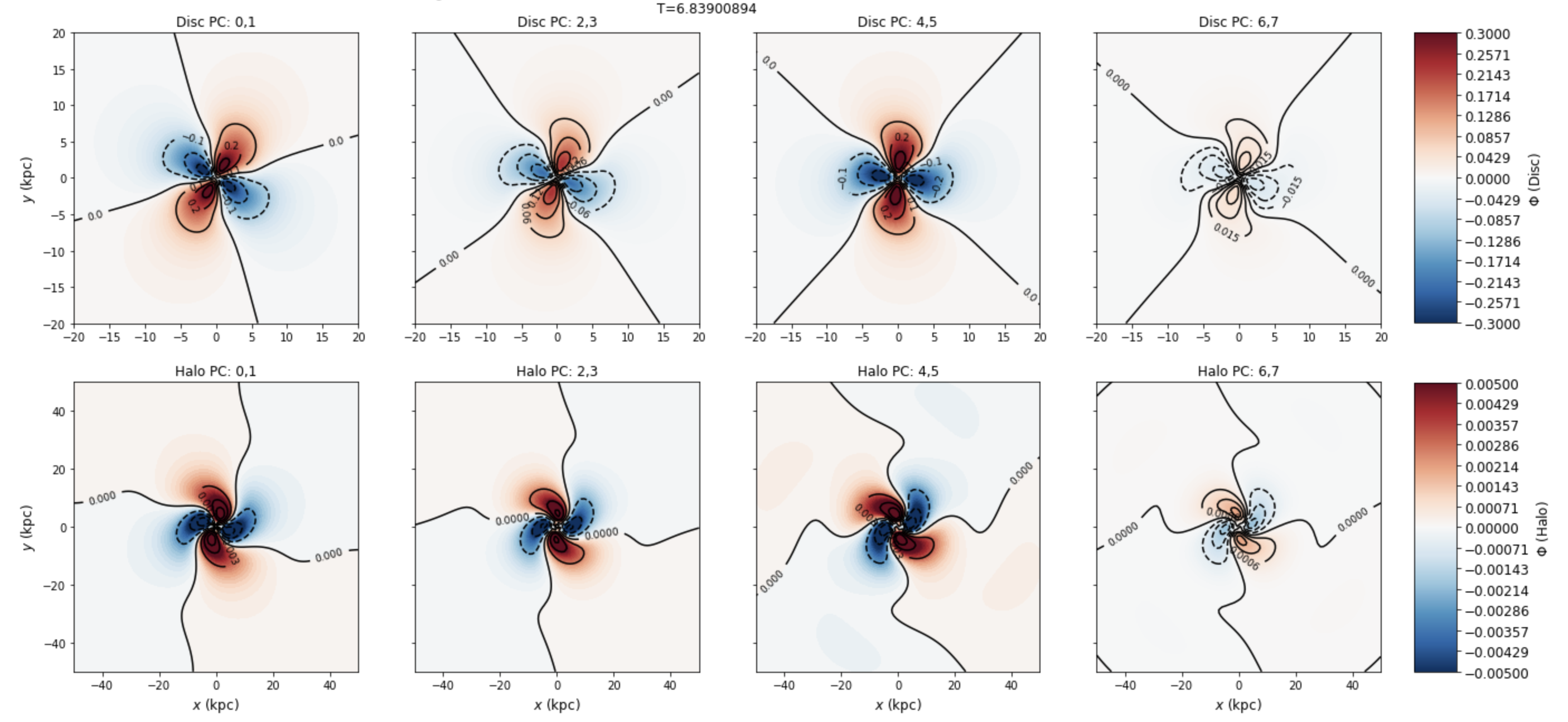Motivation
Galactic dynamics takes our understanding of the orbits of planets in the Solar System - described by Newton’s laws of Gravity and motion - and applies it to galaxies, ranging in size from thousands to trillions of stars. The stars in galaxies are in constant motion, interacting and orbiting each other - along with the gas and dust from which they came - within vast dark matter halos. They can evolve slowly over the lifetime of the Universe (over 10 billion years), gradually accreting gas and dark matter, making stars. They can also evolve much faster (over 100’s of millions of years) as they collide and merge with other galaxies.
The field enjoys a rich legacy of prior work: analytic descriptions of galaxies in isolation and estimates of the consequences of their interactions; community investment in high-resolution simulations; large-scale, high-dimensional surveys of billions of stars and galaxies; and the vital field of data science to mine and characterize both simulated and real data sets.
Our own Milky Way is replete with subtle signatures of departures from the classical models of galaxies developed in the field. There is great potential to use these signatures to develop deeper insights into outstanding dynamical problems — the formation and evolution of bars and spiral arms; the response of disks to infalling satellites; the distortion of the dark matter halo. The remaining challenge is to make the very most of this potential.
The Beyond Basis Function Expansion (B-BFE) collaboration is developing the next generation of tools for galactic dynamics to tackle this challenge. Our team combines expertise in (i) analytic models, (ii) numerical simulations, and (iii) data analysis. We aim to build a language that unites all three. We use Basis Function Expansions (BFE) that satisfy the Poisson Equation to compactly summarize spatial features in simulations. We use multivariate Singular Spectrum Analysis (mSSA) to discover the non-linear dynamics of their interaction. mSSA is an unsupervised machine learning algorithm, capable of identifying patterns in a series of BFE coefficients. Applying BFE+mSSA to a sequence of snapshots from a simulation can reveal coupled evolution across space and time. This ability to detect deep dynamical relationships in our simulations promises multiple connections: from observations through simulations to theoretical descriptions; between galactic components; and across phase-space dimensions.
Applied to numerical simulations, our approach has already revealed different stages of bar formation as well as coupled evolution between disk and halo components. The latter evolution was driven by halo mode that can be predicted using an analytic approach. B-BFE members are currently working to use BFE+mSSA to study a variety of galactic processes. The primary focus in our investigations is the response of Milky-Way-like galaxies to satellite systems, both in idealized and cosmological simulations Looking forward, our proposed tools have the potential to enhance dynamical discovery within astrophysics more generally and on any scale. The code base for this work is freely available at: https://github.com/exp-code
Gallery:


People:

Mike Petersen (Lead, U. Edinburgh) Jason Hunt (Lead, U. Surrey) Martin Weinberg (UMass) Kathryn Johnston (U. Columbia) Nico Garavito-Camargo (Flatiron, CCA) Adrian Price-Whelan (Flatiron, CCA) Robyn Sanderson (U. Penn) Arpit Arora (U. Penn) Chris Carr (U. Columbia) Sophia Lilleengen (U. Durham) Chervin Laporte (ICCUB) Emily Cunningham (U. Columbia) Gurtina Besla (U. Arizona) Eloisa Poggio Silvio Varela (U. La Serena) Tomer Yavetz (IAS) Facundo Gomez (U. La Serena) Nathaniel Starkman (U. Toronto) Carrie Filion (U. John Hopkins) Kate Daniel (U. Arizona) Chris Hamilton (IAS) Denis Erkal (U. Surrey)